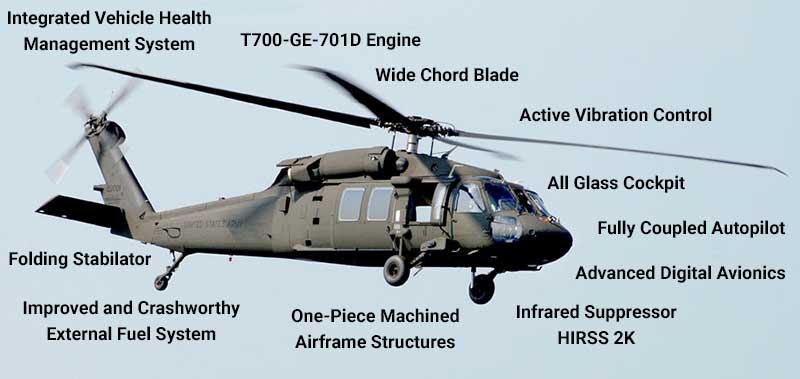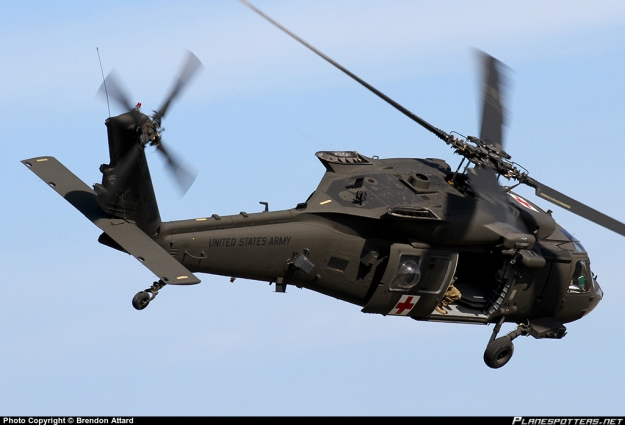Mastering the Skies: UH 60 Helicopter Upkeep List
Mastering the Skies: UH 60 Helicopter Upkeep List
Blog Article
Recognizing the Mechanics and Design Behind Uh 60 Helicopters
The UH-60 helicopter, commonly understood as the Black Hawk, stands as a peak of contemporary rotorcraft modern technology, symbolizing a mix of durable engineering and detailed mechanics. From its creation to its existing versions, the evolution of this aircraft showcases a blend of technology and functionality. As we peel off back the layers of the UH-60's style, a world of intricate systems and precise design comes to light. Comprehending the technicians and engineering behind this flexible airplane introduces a realm where precision satisfies power, and where each element plays an essential function in accomplishing flight.
Background of UH-60 Helicopters
The history of UH-60 helicopters traces back to the late 1970s when the USA Army looked for a versatile and sophisticated utility helicopter to change its aging fleet. In response to this need, the Sikorsky Aircraft Firm created the UH-60 Black Hawk helicopter. Presented in 1979, the UH-60 swiftly became a staple in military procedures because of its remarkable abilities.
The UH-60 was developed to master a selection of missions, including troop transportation, clinical discharge, digital war, and unique procedures. Its ability to adapt to different functions made it a beneficial possession to the U.S. uh 60. Military and other military pressures around the world
For many years, the UH-60 system has actually undertaken a number of upgrades and variants to improve its efficiency and equal progressing mission demands. These helicopters have seen comprehensive solution in conflicts such as the Gulf War, Afghanistan, and Iraq, showcasing their dependability and versatility in diverse functional settings. The UH-60's rich history is a testament to its long-lasting legacy as a top energy helicopter.

Engine and Power Solutions
Utilizing sophisticated propulsion modern technology, UH-60 helicopters are geared up with innovative engine and power systems to ensure ideal performance and reliability in a series of operational scenarios. The UH-60, commonly referred to as the Black Hawk, is powered by 2 General Electric T700-GE-701D engines, each efficient in providing up to 1,940 shaft horsepower. These turboshaft engines offer the essential thrust for the helicopter to perform its missions effectively, consisting of troop transport, medical discharge, and fight support.

Rotor System and The Rules Of Aerodynamics
Exactly how do the rotor system and the rules of aerodynamics of UH-60 helicopters contribute to their functional efficiency and flight capacities? The rotor system of the UH-60 helicopter plays a crucial role in giving lift and propulsion. The UH-60 includes a four-bladed, completely expressed blades system that permits high maneuverability and security throughout flight. This layout allows the helicopter to carry out a vast array of missions, from transport and medical emptying to combat operations.
The rules of aerodynamics also play a key function in the performance of UH-60 helicopters. The structured body and rotor blade layout minimize drag, enabling the helicopter to accomplish greater rates and far better fuel efficiency. The aerodynamic design of the UH-60 also adds to its capacity to operate in diverse environmental conditions, including warm temperature levels and high elevations.
Avionics and Trip Control Systems

In its elaborate control with the rotor system my review here and the rules of aerodynamics of UH-60 helicopters, the avionics and flight control systems form an essential network of innovations shaping the airplane's operational capabilities. In the UH-60, these systems include electronic screens, communication radios, General practitioner navigation, weather condition radar, and auto-pilot systems.
The trip control systems of the UH-60 are in charge of converting the pilot's inputs into the proper adjustments to the blades system, ensuring stable trip and ability to move. These systems contain hydraulic actuators, servos, and computers that work with each other to regulate the tail and main rotors, along with various other flight control surface areas. By precisely managing the helicopter's flight characteristics, these systems enable pilots to carry out a variety of goals, from transportation and search-and-rescue to combat operations, with precision and confidence.
Role and Applications in Aeronautics
The duty and applications of avionics and trip control systems in aeronautics are integral to ensuring the safe and reliable procedure of airplane, including UH-60 helicopters. Avionics systems in UH-60 helicopters incorporate a series of digital systems that help in navigating, interaction, tracking, and managing numerous aircraft functions. These systems include digital display screens, autopilot systems, interaction radios, GPS navigating devices, and weather condition radar. Flight control systems play an essential role in maneuvering the helicopter airborne, maintaining security, and making sure precise motions. The fly-by-wire technology utilized in contemporary UH-60 helicopters converts pilot inputs right into digital signals, which are then translated by the trip control computer systems to change the airplane's control surface areas. Furthermore, these systems incorporate safety functions such as autopilot settings, surface awareness advising systems, and security augmentation systems to boost the general safety and security and operational capabilities of the UH-60 helicopters in different objectives, including army transportation, medical emptying, search and rescue, and airborne firefighting.
Conclusion
In verdict, the UH-60 helicopter is a flexible aircraft with a rich background and advanced engineering. Its engine and power systems, rotor system, the rules of aerodynamics, avionics, and flight control systems all function with each other to make it a reliable and effective maker.
In its complex control with the rotor system and click the rules of aerodynamics of UH-60 helicopters, the avionics and flight control systems develop an important network of technologies forming the aircraft's operational capacities.The flight useful link control systems of the UH-60 are responsible for translating the pilot's inputs into the ideal changes to the rotor system, ensuring stable trip and ability to move. Avionics systems in UH-60 helicopters encompass a range of electronic systems that help in navigation, interaction, tracking, and controlling numerous aircraft features. Additionally, these systems integrate security features such as autopilot modes, terrain recognition warning systems, and stability enhancement systems to improve the general safety and functional abilities of the UH-60 helicopters in numerous objectives, consisting of troop transport, clinical discharge, search and rescue, and aerial firefighting.
Its engine and power systems, rotor system, the rules of aerodynamics, avionics, and trip control systems all work together to make it a dependable and effective device.
Report this page